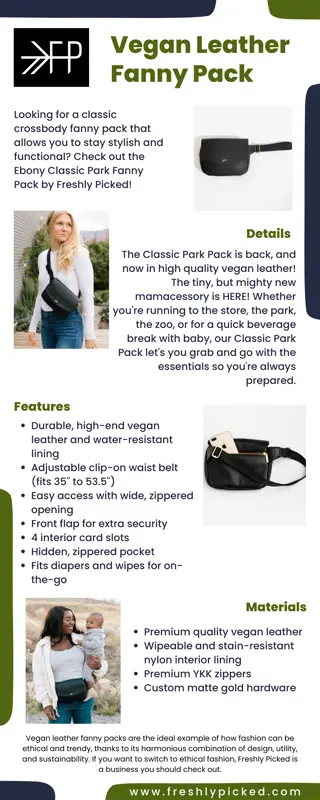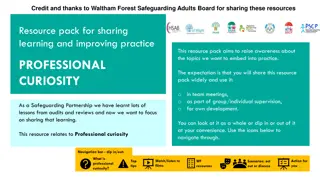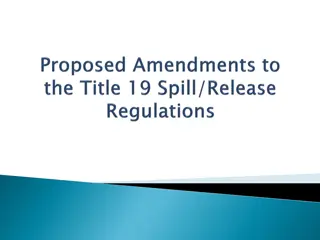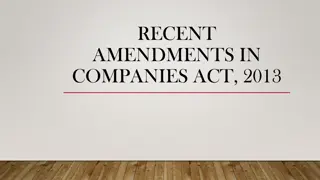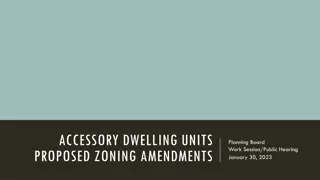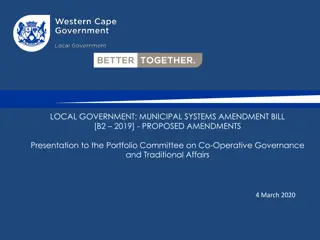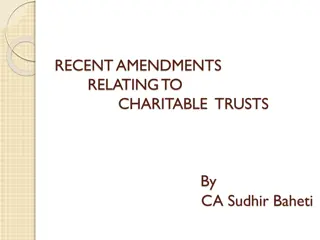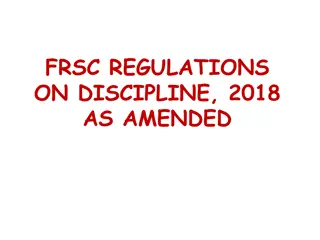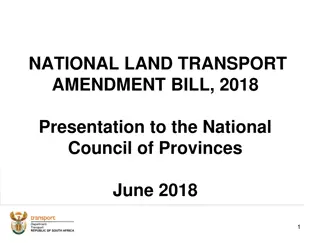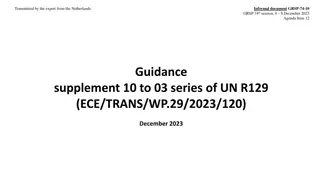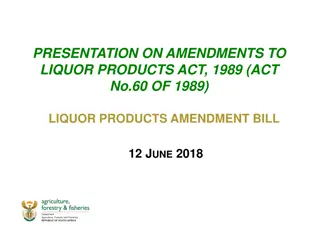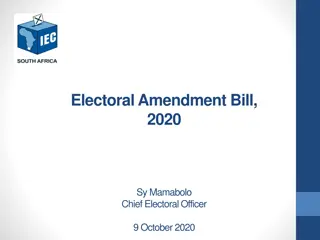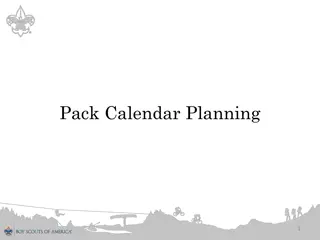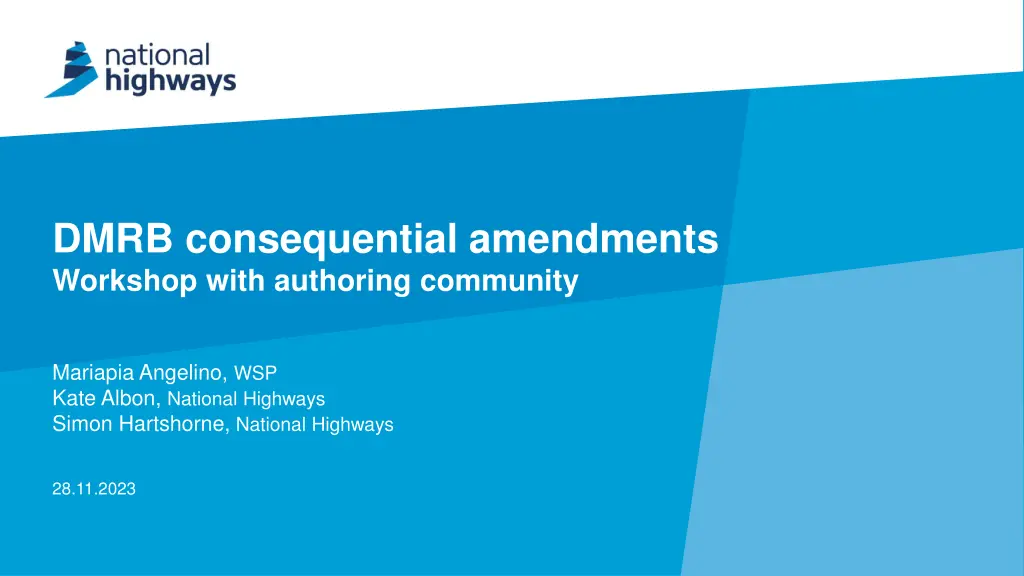
Drafting DMRB Consequential Amendments Workshop
Gain insights on drafting DMRB consequential amendments, understand key principles, and learn about governance deliverables in this workshop. Also, get tips on safe winter travel by public transport.
Download Presentation

Please find below an Image/Link to download the presentation.
The content on the website is provided AS IS for your information and personal use only. It may not be sold, licensed, or shared on other websites without obtaining consent from the author. If you encounter any issues during the download, it is possible that the publisher has removed the file from their server.
You are allowed to download the files provided on this website for personal or commercial use, subject to the condition that they are used lawfully. All files are the property of their respective owners.
The content on the website is provided AS IS for your information and personal use only. It may not be sold, licensed, or shared on other websites without obtaining consent from the author.
E N D
Presentation Transcript
DMRB consequential amendments Workshop with authoring community Mariapia Angelino, WSP Kate Albon, National Highways Simon Hartshorne, National Highways 28.11.2023
Objectives of today Present what we are trying to achieve from a final user / designer perspective Share the approach for drafting DMRB consequential amendments, including examples of good practice Share programme dates for DMRB consequential amendments Clarify governance deliverables to be produced Collect questions from the audience Use Teams chat box. We may not be able to answer all questions during this session due to time constraints, will share FAQ afterwards.
Outcome of today Understand the necessity of establishing clear links between DMRB, IfS and WSR Understand the high-level principles for drafting DMRB consequential amendments Understand the specific drafting rules for drafting DMRB consequential amendments. Know key deadlines for finalising the documents, including governance deliverables. Be ready to update the DMRB documents following the rules presented today.
Winter travel by public transport What would you do if you missed the last bus/train Plan for what could go wrong Immediately before travel, check the following: Firstly, do you need to travel? Can the journey be avoided by holding meetings via MS Teams etc. If you do need to travel, plan your route, schedule and book your tickets well in advance. Check times of last buses/trains so you don't get stranded If you are travelling alone, assign a travel buddy so someone always knows where you are and can raise the alarm if you do not check-in. How would you keep safe, arrange overnight accommodation/onward travel etc? What contact information might you need to take with you? What would you need if you found yourself stranded overnight e.g. extra prescription medication, mobile phone charger, extra change of clothes, toiletries etc? Weather forecasts and warnings Public transport operator/ organisation websites/apps etc (ScotRail, National Rail, Trainline, LNER etc) Contact colleagues, clients and third parties about travel and weather conditions at your destination If at all in doubt, do not proceed
What we are trying to achieve from a final user / designer perspective
What we are trying to achieve from a final user / designer perspective 1. Providing clear requirements and advice for where the designer has a choice to make. Where there is a design decision to be made, we want to clarify how we expect our supply chain to make that decision to meet our requirements for the outcome that we want. Inform how the designer sets values, classes, levels etc. appropriate to the design outcome. 2. Providing requirements and advice which apply to designers in general regardless who assumes this role by focusing on design outcomes rather than contractual arrangements. I.e. it does not matter if it is contractor or third-party design. 3. Establishing clear links between: National and EU standards The ultimate goal is to achieve a thread of information running through our documents using consistent topics and terminology, including our criteria for the design decisions and the communication of those decisions to the constructor. DMRB Design decisions (not roles) Design outputs IFS WSR
What we do not want A list that just repeats the specifier instructions A list that just repeats sections of external standards, e.g. Annex ZAs References to specific WSRs, which may change No advice on how to make a design decision No criteria for design outcomes
Manual for Development of Documents The drafting rules in MDD Part 3, v.6.4 shall apply.
Specific drafting rules 1. Verb forms 2. Consistent topics and terminology 3. Redrafting of advisory text 4. Clause neutrality 5. Cross references 6. Clarity of design outputs 7. Performance and method requirements 8. Document location based on the audience
1. Verb forms Two verb forms for requirements: must / shall Three verb forms for advice: should / may / can Advice always relates to a requirement Avoid implicit requirements phrased as advice Hidden requirements such as is required to , are needed to are necessary for
2. Consistent topics and terminology Same terminology has to be used when referring to same topics. This supports consistency and makes text clear and unambiguous, as well as linking WSRs and design outputs. This applies at all levels within a document: Section titles Headings and sub-heading Requirements, advice and notes This applies across related DMRB and MCHW documents This applies both internally and when referencing a third party (BSI) standards.
Example of consistent topics and terminology CC 204 High friction surfacing General requirements for high friction surfacing 1.1 High friction surfacing (HFS) shall be installed in the locations detailed in WSR 204/001. SI.1.1a-e location stuff SI.1.1f Complete field 'Product application', of type multi-select list, selecting from options Cold applied HFS, Hot applied HFS, to define the application of HFS. SI.1.1g Complete field 'HFS performance designation', of type single-select list, selecting from options A, B, C, to define the performance designation of the HFS. CD 236 NAA(E) E/3. Design outputs for surface treatments High friction surfacing E/3.1 The product application shall be selected from one or more of the following: cold applied HFS; and hot applied HFS. NOTE The product application can affect the service life of the material. E/3.2 The HFS performance designation shall be selected in accordance with BS 8870 [Ref 6.N] BS 8870 The hierarchy of performance designations shall be such that, in accordance with Table 5: a) A forms the minimum; b) B is more onerous than A; and c) C is more onerous than B. A product satisfying a specific performance designation shall be accepted for use on sites with a less onerous performance designation. Table 5 Performance designation for combination of traffic and site categories IfS DMRB BSI standard
3. Redrafting of advisory text Assess whether it is advice or hidden requirements. Hidden requirements such as is required to , are needed to , are necessary for . Check whether advice should go in the main text or in an appendix. Main text if short / limited clauses. Appendices if longer see MDD rules. Note that appendices cannot contain requirements nor should become a repository of old information. Remove obsolete content, redraft content that is still valid following MDD rules.
4. Clause neutrality The DMRB shall not assume that a task will be carried out by a specific third party DMRB design documents apply to designers in general. DMRB do not prescribe procedures or ascribe organisational or personnel roles, functions or responsibilities unless imperative for the document under consideration (for example when introducing specific roles clearly defined in the document). There should not be a differentiation between a principal designer, a specialist designer or a contractor carrying out the role of designer. The DMRB is written to produce design outputs that inform the WSR and the works. We need to enable document usage under differing types of contracts and procurement used by the Overseeing Organisations. We need to support consistency in terminology across DMRB documents (e.g. technical approval authority / checkers)
Examples of clause neutrality 1.1 For each gabion wall for earthworks the design output identified in Section X of this document shall include: Gabion structure reference; Drawing or model ID; Drawing or model title; Minimum working life; If Contractor design is required or not. 2.1 Designers and contract specifiers should seek early engagement with asphalt suppliers and contractors regarding the available WMA products and their suitability on a scheme specific basis. The role of specifier will never involve engagement with third parties. Not the designer s decision as to the form of further contracts.
5. Cross references (1/2) Do not make direct reference to WSRs. Introduce a standard statement in the Foreword at document level. 3.3 The TASCAR design proposals shall include all details necessary: Foreword Publishing information This document is published by National Highways. for the construction of TASCAR in accordance with CC 133 [Ref 1.N]; and to meet the works specific requirements (WSR) for the scheme. This document supersedes BD 100/16, BA 57/01, BD 57/01 and IAN 124/11 which are withdrawn. This document provides requirements and advice used to develop the design outputs required to deliver the works in accordance with CC 483 (Structural steelwork), CC 482 (Structural concrete), etc. Tail wagging the dog. WSR does not form part of the design brief.
5. Cross references (2/2) Manage design outputs relevant to several DMRB documents. CD 354 Design of minor structures will cover design outputs for all minor structures including column height, bracket projection etc. This design outputs are also relevant to TD 501 Road lighting design. TD 501 shall include a clause The lighting design outputs for lighting columns shall be provided in accordance with Section X of CD 354
6. Clarity of design outputs Design outputs have to be specific, measurable, achievable, unambiguous, contractually sound. Avoid ambiguous phrases ( consideration given to , appropriate ). See list of vague terms to avoid in MDD Part 3, Table 2. Design outputs have to support achievement of the end result by presenting clear flow of information. Text covering outcomes, outputs, options and criteria not just lists of SIs. [post meeting edit]
Example of ambiguous requirements 2.6 The lighting design shall be developed to support Net Zero targets and meet circular economy requirements. 2.3 The design outputs for the limits for the contaminant concentrations in earthworks materials shall include: the unique reference to identify the location of the contaminant; the unique reference to identify the contaminant reference; the minimum concentration of contaminant in a material to classify the material as unacceptable; the type of test required to determine the contamination concentration in the material and the standard the test is to be undertaken in accordance with; the frequency of testing required to determine the contamination concentration in the material. No references to net zero targets or circular economy requirements. None of this includes advice to the designer. There is no way to control the designer contractually if inappropriate values or test are selected.
Example of presentation of flow of information CC 204 High friction surfacing General requirements for high friction surfacing 1.1 High friction surfacing (HFS) shall be installed in the locations detailed in WSR 204/001. SI.1.1a-e location stuff SI.1.1f Complete field 'Product application', of type multi-select list, selecting from options Cold applied HFS, Hot applied HFS, to define the application of HFS. SI.1.1g Complete field 'HFS performance designation', of type single-select list, selecting from options A, B, C, to define the performance designation of the HFS. CD 236 NAA(E) E/3. Design outputs for surface treatments High friction surfacing E/3.1 The product application shall be selected from one or more of the following: cold applied HFS; and, hot applied HFS. NOTE The product application can affect the service life of the material. E/3.2 The HFS performance designation shall be selected in accordance with BS 8870 [Ref 6.N] BS 8870 The hierarchy of performance designations shall be such that, in accordance with Table 5: a) A forms the minimum; b) B is more onerous than A; and c) C is more onerous than B. A product satisfying a specific performance designation shall be accepted for use on sites with a less onerous performance designation. Table 5 Performance designation for combination of traffic and site categories IfS DMRB BSI standard
Example of presentation of flow of information Some verification / documentation requirements specified in SIs relay on the specifier to working out contract specific compliance testing required. This is not for the specifier to guess , rather advice should be provided in the DMRB on what is expected to minimise risks.
Text not just lists STEP 1: High level design outcomes STEP 2: Specific design outputs / characteristics STEP 3: Presentation of options / criteria STEP 4: Explanation of how to make a choice
Text not just lists Unclear what the final outcomes are. This could be covered in another document, therefore reference should be explicitely made to that document to provide complete, clear and unambiguous information. STEP 1: High level design outcomes STEP 2: Specific design outputs / characteristics STEP 3: Presentation of options / criteria STEP 4: Unclear how to make a choice. This would leave a gap and designers wouldn t know what criteria are for achieving the final outcomes. Explanation of how to make a choice
7. Performance and method requirements Refer to MDD Part 3, section 12 and Annex 3B on the mixed performance- based approach.
8. Document location based on the audience To choose the appropriate document to move content, consider the audience.
Specific drafting rules In this session we have covered: 1. Verb forms 2. Consistent topics and terminology 3. Redrafting of advisory text 4. Clause neutrality 5. Cross references 6. Clarity of design outputs 7. Performance and method requirements 8. Document location based on the audience Please undertake a final consistency check between DMRB and MCHW
Key programme dates for DMRB consequential amendments
Key programme dates end of end of end of end of end of end of end of end of end of end of end of end of end of Drafting and finalisation of governance deliverables Content specialists (CS) pre-consultation review Addressing comments from CS pre-consultation review Consultation Comment resolution Quality review Technical authors addressing comments from quality review Pre-check CIAT Commercial review TSC chair ratification DD approval HoS approval CHE Authorisations end of Jan 2024 end of Feb 2024 mid March 2024 mid April 2024 mid May 2024 end of May 2024 mid June 2024 end of June 2024 end of July 2024 end of August 2024 end of September 2024 end of October 2024 end of November 2024
Governance deliverables to be produced
Governance deliverables CARS document Clause change summary (existing DMRB documents) Background commentary (new DMRB documents) Impact assessment report, including commercial impact assessment template (CIAT) Consultation report High level narrative document (for approvers and authorisers)
DMRB Support provided Weekly drop-in sessions on Tuesday (now covering consequential amendments too) Content specialists Quality Reviews Automated checks incorporated into CARS Content reviewers assigned to specific documents to streamline delivery of compliant documents CIAT pre-checks MCHW & DMRB Programme Management To support authoring teams and help manage workload Teams Channels DMRB and MCHW training materials and governance team TSC chairs and secretaries knowledge sharing channel To share updates 33
Outcome of today Understand the necessity of establishing clear links between DMRB, IfS and WSR Understand the high-level principles for drafting DMRB consequential amendments Understand the specific drafting rules for drafting DMRB consequential amendments. Know key deadlines for finalising the documents, including governance deliverables. Be ready to update the DMRB documents following the rules presented today.
Menti https://www.menti.com/blnd1gxt3dks www.menti.com Code: 9717 4812


